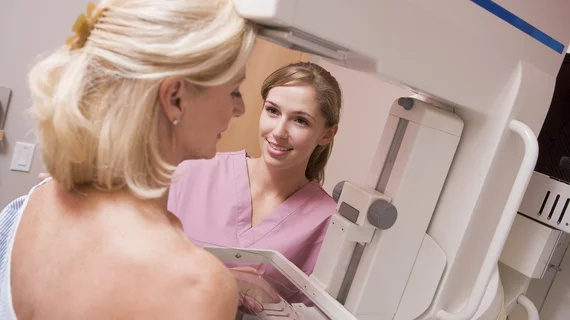Should women with dense breasts pursue additional screening? Here’s what radiologists think
When women learn that they have dense breast tissue after a mammogram, should they seek out supplemental screening? A new study published in the Journal of Breast Imaging asked radiologists what they currently recommend for patients at all risk levels.
“Currently, there are no guidelines recommending the use of supplemental screening in women with dense breasts, although there is legislation in over 30 states requiring women be notified of breast density,” wrote Tisha Singer, MD, Rhode Island Hospital and Alpert Medical School of Brown University in Providence, Rhode Island, and colleagues. “Nearly half of the screening population has dense breasts. Both healthcare providers and patients regularly seek advice about supplemental screening. Further, even though patients receive notification letters, they may struggle to understand them.”
With so much uncertainty surrounding this issue, Singer et al. sent an anonymous survey to members of the Society of Breast Imaging (SBI) to see what kind of supplemental screening they recommend for women with dense breast tissue. A total of 295 SBI members responded to the survey, good for a response rate of 15 percent. Five percent of respondents did not complete the survey to the very end, and “no statistically significant differences” were noted between complete responses and incomplete responses.
When asked knowledge-based questions related to breast density, 52.7 percent of respondents knew that extremely dense breasts increase a patient’s relative risk of breast cancer by four to six times compared to women with “almost entirely fatty breasts.” Meanwhile, 57.1 percent of respondents knew that the relative risk of women with heterogeneously dense breasts compared to women with scattered fibroglandular density was 1.2 percent.
In addition, the survey revealed that ultrasound is recommended “at a relatively low rate” for women with dense breasts, regardless of their risk of breast cancer. Digital breast tomosynthesis (DBT), however, was recommended “at a relatively high rate,” regardless of the patient’s breast cancer risk.
The high levels of recommendations for DBT were “somewhat expected,” according to the authors, because DBT has been introduced to routing breast cancer screening more and more throughout the United States.
“Although many may not consider DBT supplemental, this was included as a choice for recommended imaging because many practices transition to DBT in stages, offering both DBT and 2D for some period,” the authors wrote. “In this setting, where only some mammography units are DBT and others are only 2D digital mammography, practices sometimes triage certain patients (those with dense breasts, high risk, or personal history of breast cancer, for example) to DBT rather than 2D.”
When the patient was at a high risk of breast cancer, MRI scans were recommended at a high rate, but when the patient was at an average or intermediate risk, MR imaging was recommended at a low rate.
“MR is a supplemental screening method recommended for high-risk patients, and it is covered by most insurance companies in this setting,” Singer and colleagues wrote. “Radiologists may not have recommended MR for average- and intermediate-risk patients because of concerns around insurance coverage, as well as lack of guidelines suggesting MRI for this patient population.”
Finally, radiologists were more likely to recommend additional imaging examinations for themselves than they would for their family and friends or for patients. The authors suggested that this could be because radiologists “may not be deterred by the exam cost if not covered by insurance” and that scheduling such an examination may just be considerably easier for a radiologist than for another patient. Another reason for this may be that radiologists are familiar with the procedures, “and thus may be less concerned about potential false-positive results for themselves.”

